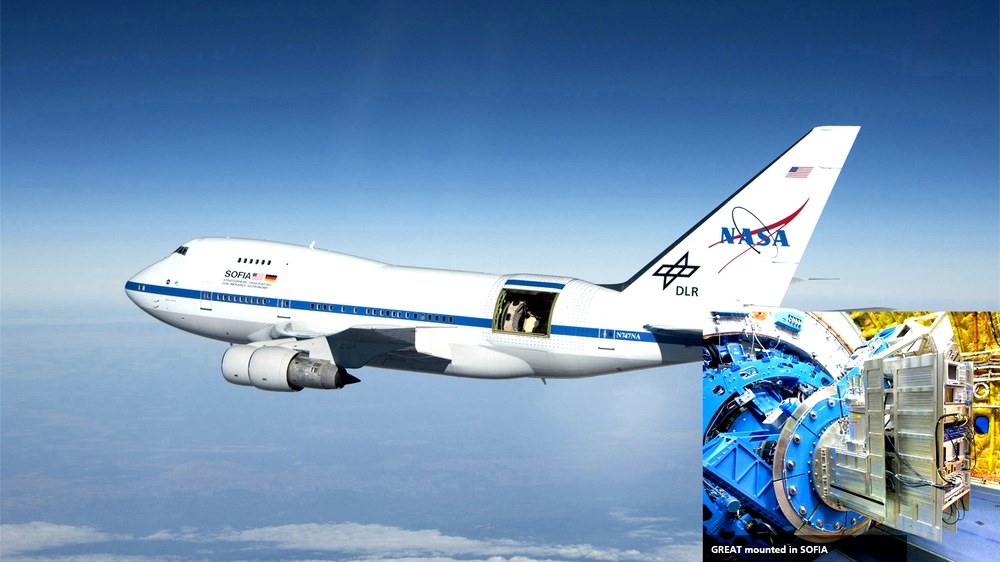Heterodyne Spectroscopy Team: Labs & Techniques
Terahertz/Millimeter-Wave Spectroscopy
Many gases exhibit a unique fingerprint in the terahertz/millimeter-wave frequency range due to rotational transitions of the molecules. Therefore, spectroscopy in this frequency range is a powerful tool for analytical gas sensing. We aim to develop a highly specific, selective and sensitive terahertz gas sensor for various applications. One particular promising application is the analysis of human breath. As it contains thousands of volatile organic compounds, it can be used to indicate metabolic processes or diseases.

References:
N. Rothbart, O. Holz, R. Koczulla, K. Schmalz, and H.-W. Hübers, "Analysis of Human Breath by Millimeter-Wave/Terahertz Spectroscopy.", Sensors 19,2719 (2019).
N. Rothbart, K. Schmalz, and H.-W. Hubers, "A Compact Circular Multipass Cell for Millimeter-Wave/Terahertz Gas Spectroscopy.", IEEE Trans. THz Sci. Technol. 10, 9 (2020).
High-resolution Terahertz Laser Absorption Spectroscopy
Terahertz quantum-cascade lasers (QCLs) are powerful and extremly narrowband radiation sources for the frequency range of 2.5-5.5 THz. The recent technological progress allows for the development of high-resolution spectrometers in a previously unaccessible spectral range. Terahertz QCLs enable sensitive and selective trace gas sensing, as well as Doppler-free laser absorption spectroscopy. Besides, they allow to study a rich spectrum of laser physical effects in the Terahertz range, such as laser self-detection via optical feedback. The research in our group is in close collaboration with the Paul-Drude-Institut in Berlin, which is a leading institute for the development of Terahertz QCLs. Other activities include the development of Terahertz molecular gas lasers with mid-infrared QCLs as pump sources.


References:
T. Hagelschuer, M. Wienold, H. Richter, L. Schrottke, L. Biermann, H.T. Grahn, and H.-W. Hübers, "Terahertz gas spectroscopy through self-mixing in a quantum-cascade laser.", Appl. Phys. Lett. 109, 191101 (2016).
M. Wienold, T. Alam, L. Schrottke, H. T. Grahn, and H.-W. Hübers, "Doppler-free spectroscopy with a terahertz quantum-cascade laser.", Opt. Express 26, 6692 (2018).
T. Alam, M. Wienold, X. Lü, K. Biermann, L. Schrottke, H. T. Grahn, and H.-W. Hübers, "Wideband, high-resolution terahertz spectroscopy by light-induced frequency tuning of quantum-cascade lasers.", Opt. Express 27, 5420 (2019).
Terahertz air- and spaceborne applications
Due to atmospheric water absorption, terahertz astronomy relies on air- and space-borne instruments. We investigate and develop heterodyne receiver technology for present and future missions, with a focus on the frequency range of 3 - 5 THz. In such systems, quantum-cascade lasers are used as local oscillator. Detectors are either hot-electron bolometers or Schottky diode mixers, where the latter is of particular relevance for small satellites with limited cryogenic cooling capabilities. Previously, we developed the quantum-cascade-laser based local-oscillator for the GREAT instrument onboard of the SOFIA observatory (pictures from left to right: SOFIA with GREAT receiver, DLR local oscillator system).


Reference:
H. Richter et al., "4.7-THz local oscillator for the GREAT heterodyne spectrometer on SOFIA.", IEEE Trans. Terahertz Sci. Technol. 5, 539 (2015).
